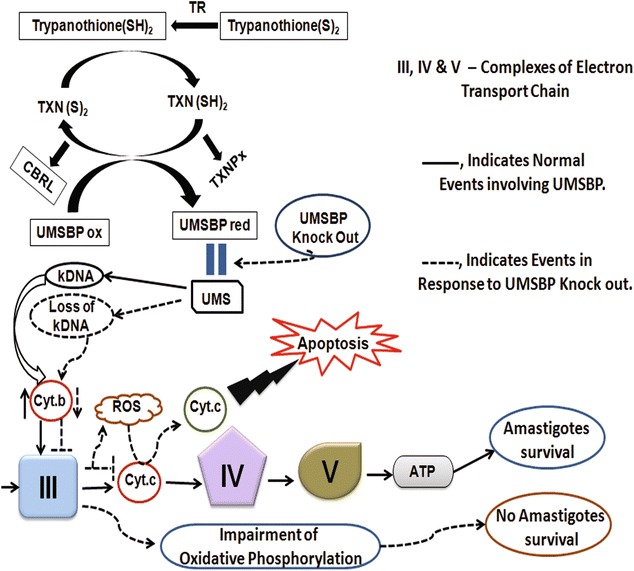Fig. 8.

Model representing the functional regulation of LdUMSBP during kDNA replication and its role in electron transport chain, apoptosis, oxidative phosphorylation and amastigotes survival. The trypanothione upon reduction by trypanothione reductase (TR) reduces tryparedoxin (TXN). Reduced TXN reduces UMSBP, tryparedoxin peroxidise (TXNPx) and CBRL. Reduced LdUMSBP binds with UMS of minicircle and kDNA replication initiates, whereas its oxidation impairs the binding with UMS. The CBRL, TXN and TXNPx regulate the binding activity of LdUMSBP with their opposite effects. Over expression (OE) of CBRL induces oxidation of UMSBP which results kDNA loss. Co-overexpression of TXN rescues the parasites from this negative effect. UMSBP knockout in L. donovani leads to kDNA loss which in turn reduces the level of Cyt. b and complex-III of Electron Transport Chain is inhibited and consequently ATP generation (oxidative phosphorylation) is impaired and parasite survival is reduced through apoptosis in response to complex-III inhibition. Also, the impairment of oxidative phosphorylation and ATP generation reduces the amastigotes survival as well as its virulence in BALB/c mice. UMSBP ox oxidized UMSBP, UMSBP red reduced UMSBP, TXN(S) 2 oxidized TXN, TXN(SH) 2 reduced TXN
